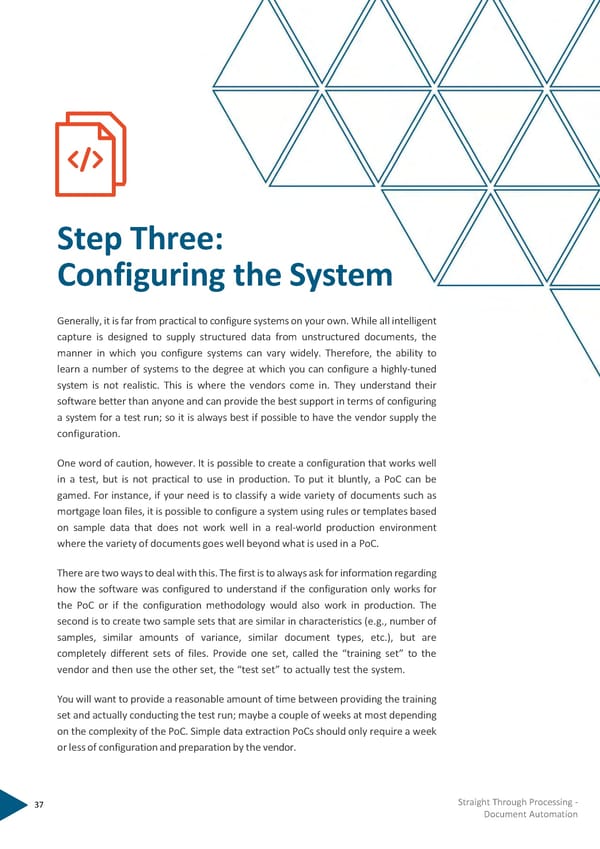Step Three: Configuring theSystem Generally,it is far from practicalto configuresystemsonyourown.Whileallintelligent capture is designed to supply structured data from unstructured documents, the manner in which you configure systems can vary widely. Therefore, the ability to learn a number of systems to the degree at which you can configure a highly-tuned system is not realistic. This is where the vendors come in. They understand their softwarebetterthananyoneandcanprovidethebestsupportintermsofconfiguring a system for a test run; so it is always best if possible to have the vendor supply the configuration. Onewordofcaution,however.It is possible to create a configuration that works well in a test, but is not practical to use in production. To put it bluntly, a PoC can be gamed. For instance, if your need is to classify a wide variety of documents such as mortgageloanfiles,it is possible to configure a systemusing rules ortemplates based on sample data that does not work well in a real-world production environment wherethevarietyofdocumentsgoeswellbeyondwhatisusedinaPoC. Therearetwowaystodealwiththis.Thefirstistoalwaysaskforinformationregarding how the software was configured to understand if the configuration only works for the PoC or if the configuration methodology would also work in production. The secondis to createtwo samplesetsthat aresimilar in characteristics (e.g., number of samples, similar amounts of variance, similar document types, etc.), but are completely different sets of files. Provide one set, called the “training set” to the vendorand then use the other set, the “test set” to actually test the system. Youwillwanttoprovideareasonableamountoftimebetweenprovidingthetraining set and actually conductingthetest run; maybeacoupleofweeksatmostdepending onthecomplexityofthePoC.SimpledataextractionPoCsshouldonlyrequireaweek orlessofconfigurationandpreparationbythevendor. 37 Straight Through Processing - Document Automation
 Straight Through Processing for Document Automation Page 36 Page 38
Straight Through Processing for Document Automation Page 36 Page 38